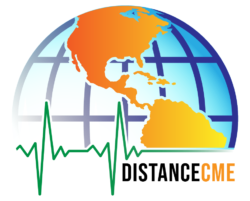Hang around any EMS advisory council meeting or attend a few local, State or Federal EMS symposiums and eventually you may hear some talk about the EMS Agenda 2050. So what is all the fuss about and how does it affect me now and in the future? EMS Agenda 2050 has been described as a “wish list” or “blueprint” for the future of EMS and has been supported by many state and federal agencies and entities including but not limited to: National Highway Traffic Safety Office of EMS, Department of Homeland Security and EMS for Children Program at the Health Resources and Services Administration.
The six guiding principles of EMS Agenda 2050 are Inherently Safe and Effective care, Integrated and Seamless processes, Reliable and Prepared staff and equipment, Socially Equitable standards of care, Sustainable and Efficient services and Adaptive and Innovative advances. It involves technological advances, a people-centered approach to patient care, integration of services to best serve the public in general; and funding that will allow growth and improvement in patient outcomes that involve not only urgent, emergent or medically necessary approaches to healthcare, but also providing services that are largely proactive and diverse. The days of an EMS call for service resulting in just a transport to an Emergency Department for care are anticipated to be a thing of the past if the EMS Agenda 2050 comes to some form of fruition. The days of EMS providers being an isolated part of the total healthcare system are also something that the Agenda looks to improve upon. Technological advances both in the emergent, non emergent, preemptive and post-discharge population will play a large role in improving outcomes and decreasing mortality and morbidity. Policies, procedures, protocols and clinical operating guidelines will no longer be based solely or in part on anecdotal evidence, but on evidence based research. Beneficial interventions will be more aggressively implemented while interventions that have proven ineffective or harmful will be a thing of the past. EMS agencies across the county will be utilizing a standardized method of data collection to show which interventions are beneficial to the patients we serve and which ones have limited benefit or may even be harmful. Telecommunication with multiple sub specialties will allow the provider to prepare for the call before scene arrival, aggressively and appropriately treat a wide variety of patients on the scene and also provide competent, comprehensive patient care while transporting to the most appropriate destination to serve the patients’ unique needs at the time.
If all of this sounds to you like a pipe dream or an unattainable nirvana, you are not alone. Is everything that is on the wish list of the EMS Agenda 2050 going to come to fruition? The answer is a definite No, but maybe some of the goals of the Agenda can be implemented and that alone will definitely improve over all patient care and hopefully improve the EMS work environment. EMS is still in it’s infancy when compared to other healthcare professions like nursing and physician practice, but we ARE making progress and growth never comes without challenges. No one in EMS enters the career path for the pay, for the schedule or for the recognition of our healthcare peers but most will agree that making a difference on the worst day of someone’s life can be a pretty good side benefit of the job. The EMS Agenda 2050, while not perfect, makes an attempt to improve all aspects of patient care and the provision of patient care from the provider’s perspective.
EMS.gov 10-18-2023 Planning For The Future: EMS Agenda 2050 https://www.ems.gov/issues/planning-for-the-future-ems-agenda-2050/
EMS.gov 01-2019 EMS Agenda 2050: A People Centered Vision for the Future of Emergency Medical Services https://www.ems.gov/assets/EMS-Agenda-2050.pdf
